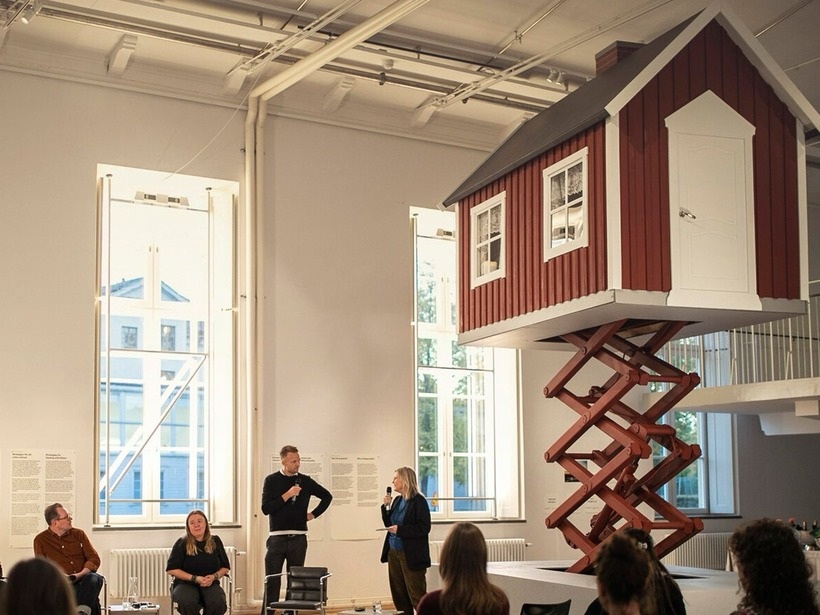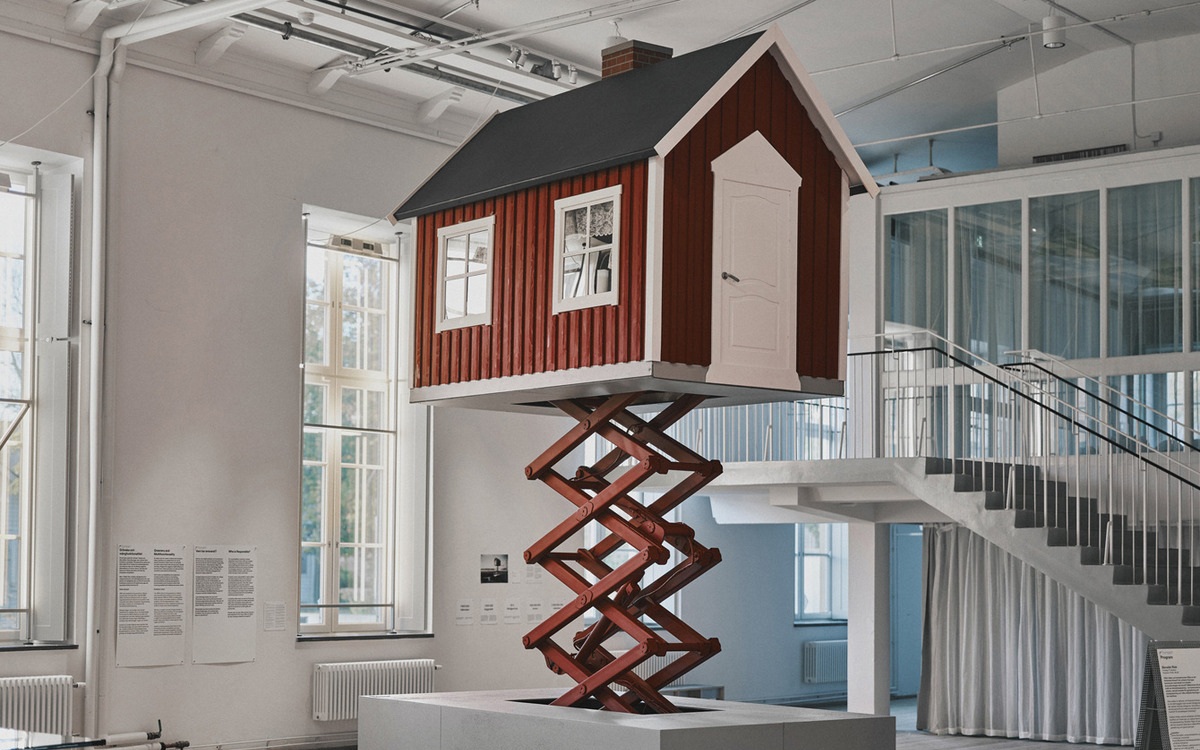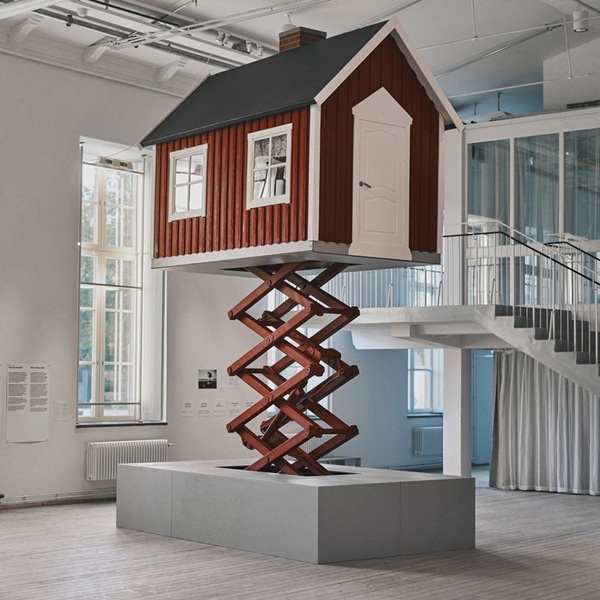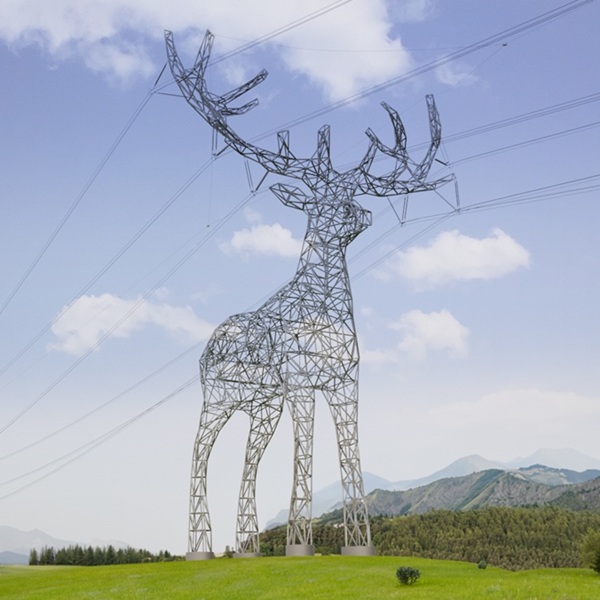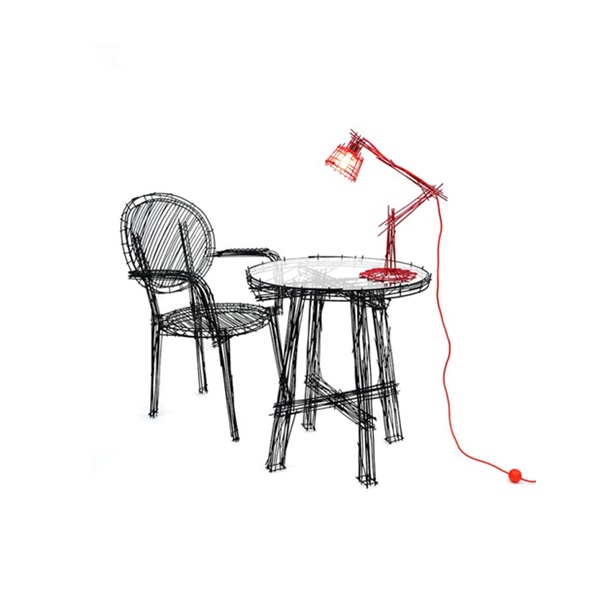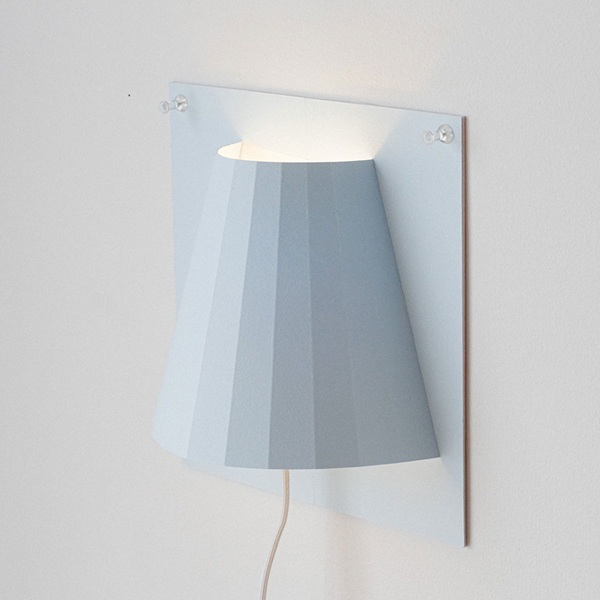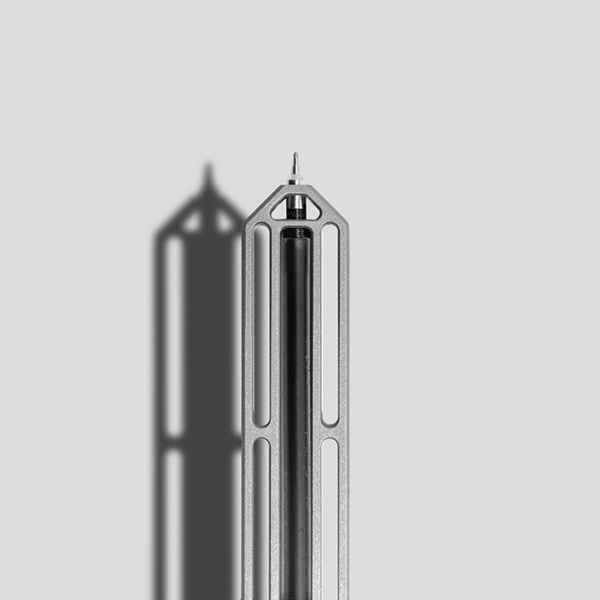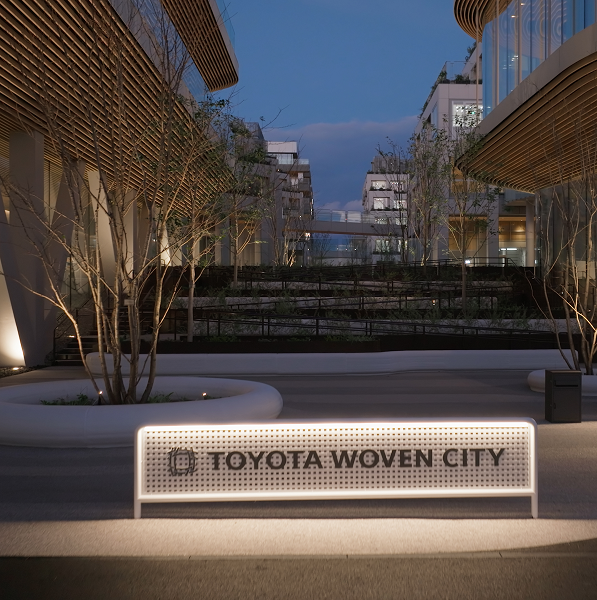In remote or challenging environments, there has been a growing need for adaptable and sustainable housing. Ulf Mejergen Architects (UMA) designed the Lift House with flexibility and efficiency in mind. This design can be considered a creative response to the environmental challenges that will be faced in the future.
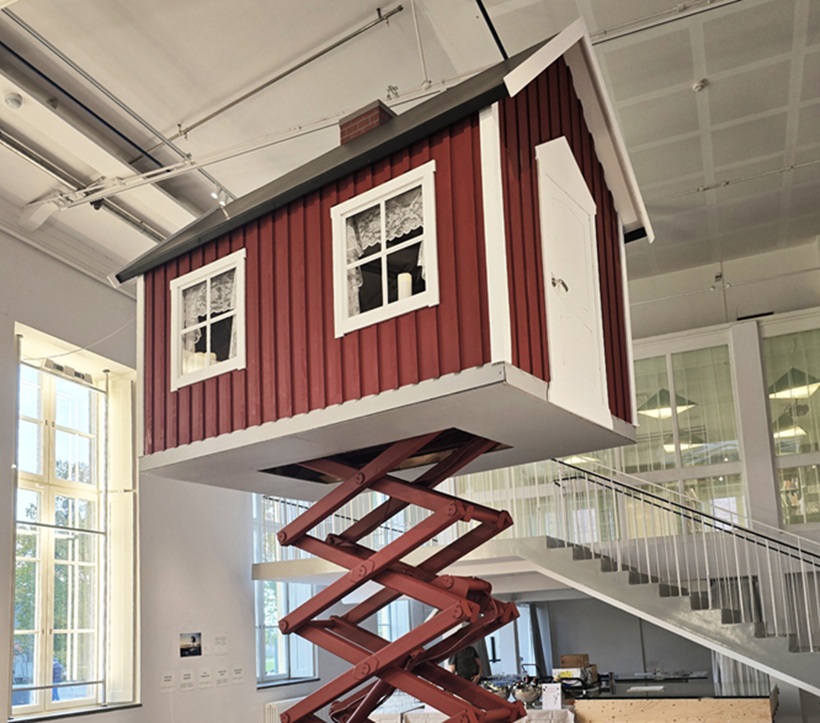
Image Credits: UMA
The Lift House can stand elevated above the ground with the help of scissor lift support. These structural points reduce environmental impact while offering panoramic views and flood protection. As climate concerns and spatial constraints continue to shape modern architecture, the Lift House represents a visionary solution.
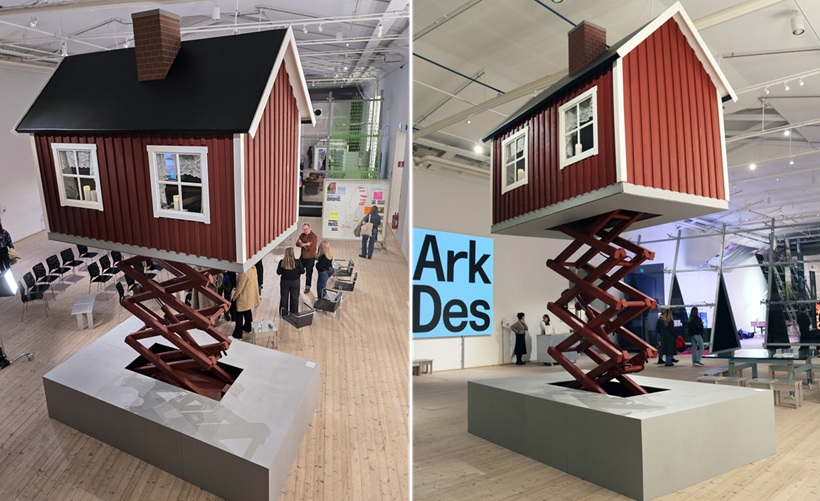
ArkDes—The Swedish Centre for Architecture and Design invited UMA to design an installation for its “Beredd (Ready)” exhibition. This exhibition explores how architecture and urban planning can adapt to the escalating challenges of climate change.
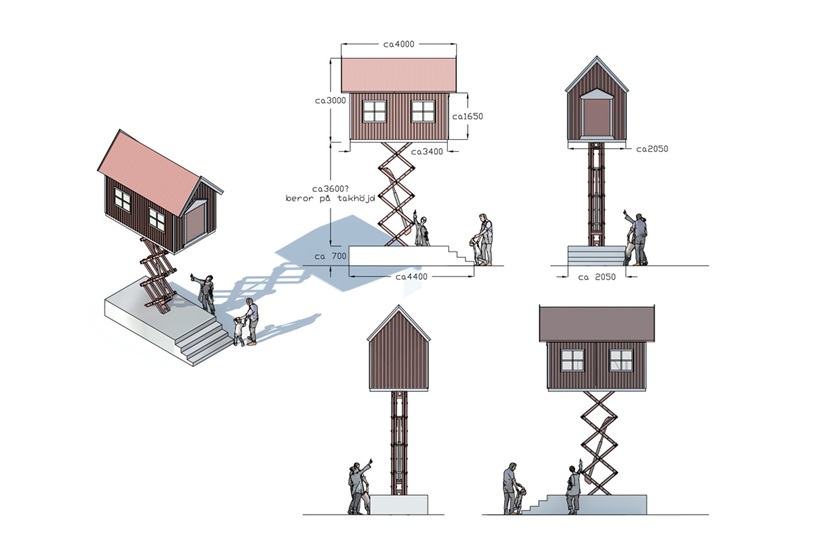
Linköping University influenced the concept by climate research and outlined three traditional risk management strategies: defend, attack, or retreat. But surprisingly, UMA proposed a fourth strategy: temporary retreat. In short, this mobile house can rise, relocate, and adapt in case the ground fails.

How Does the Scissor Lift System Work?
This red cottage by UMA operates on an ingenious elevating system to adapt to changing environmental conditions. This industrial scissor lift system redefines how architecture can adapt to environmental threats. The Lift House is a traditional Swedish wooden cottage mounted on a mechanical lift. This lift is capable of elevating the structure above rising floodwaters or unstable ground.
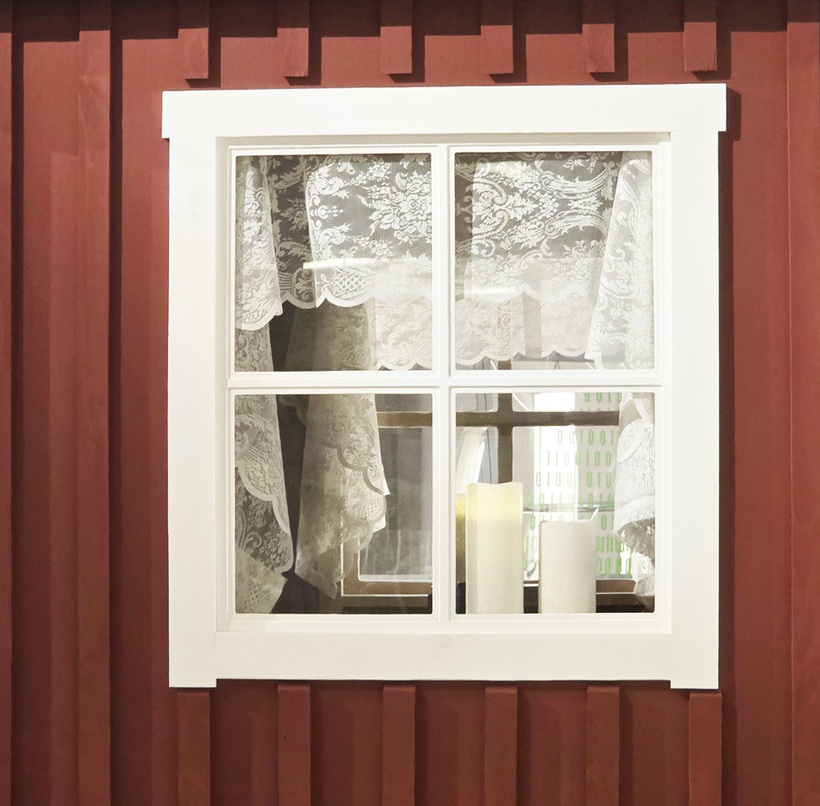
The downpoint of this house is its holding capacity. The system can hold only 227 kilograms. Therefore, every element was carefully optimized for material efficiency and weight distribution. For example, the chimney made from CNC-cut MDF, lightweight interiors, and minimalist furniture ensure balance without sacrificing aesthetics.
In short, the Lift House by UMA stands as a symbol of resilience and adaptability to prove future homes may need to move, lift, and evolve.
